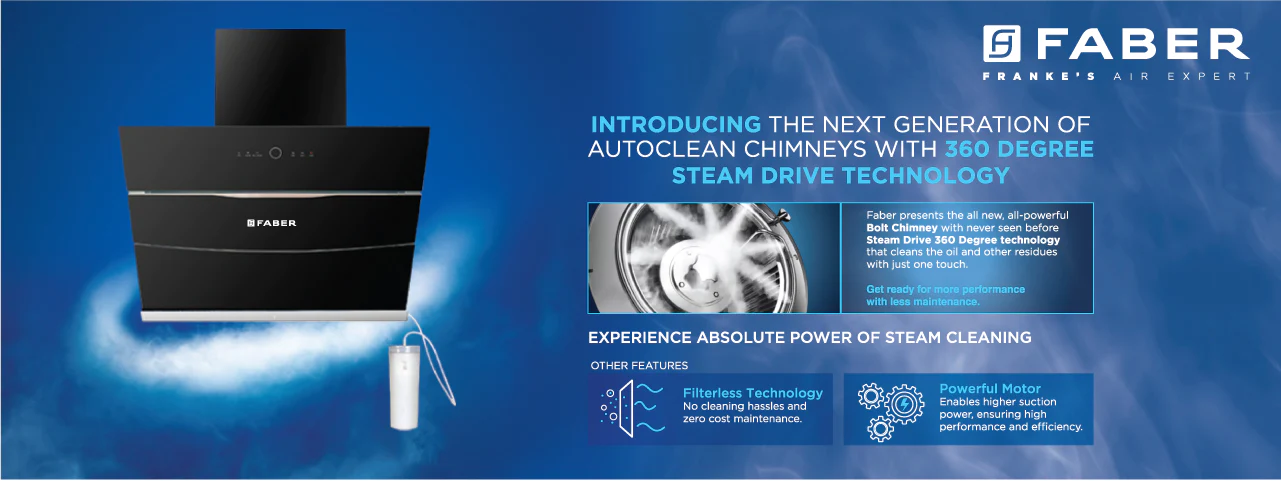Installation and Maintenance of Kitchen Chimneys.

Kitchen chimney is a crucial appliance in the kitchen that helps in removing smoke, oil, and other pollutants from the kitchen. It is essential to have a kitchen chimney installed in your kitchen to maintain a healthy and hygienic cooking environment. However, installing and maintaining a kitchen chimney can be a daunting task for many homeowners. Here, we will discuss the important aspects of the installation and maintenance of kitchen chimneys/hood.
Installation of Chimney in Home/House
Installing a kitchen chimney is not a DIY task and should be done by professionals. The process of installation involves several steps, including measuring the kitchen space, selecting the right size and type of chimney/hood, and installing the chimney according to the manufacturer's instructions.

Measure the Kitchen Space: Before installing a kitchen chimney, it is essential to measure the kitchen space. The size and type of chimney you select will depend on the size of your kitchen. A smaller kitchen will require a smaller chimney, while a larger kitchen will require a larger chimney.
Select the Right Size and Type of Chimney/Hoods: There are different types of kitchen chimneys available in the market, including:
The type of chimney you select will depend on the layout of your kitchen and your personal preferences.
Additionally, the size of the chimney should be in proportion to the size of your kitchen. A small kitchen will require a smaller chimney, while a larger kitchen will require a larger chimney.
Installing the Chimney:
Once you have selected the right size and type of chimney, the next step is to install it. The installation process involves attaching the chimney to the wall or ceiling, connecting the ductwork, and connecting the power supply. It is important to follow the manufacturer's instructions during the installation process to ensure that the chimney is installed correctly.
Maintenance of Kitchen Chimney
Proper maintenance of your kitchen chimney/hood is essential to ensure that it works efficiently and lasts for a long time. Regular cleaning and maintenance will also help in preventing fire hazards. Here are some tips for maintaining your kitchen chimney.
Cleaning of Chimney:
The most important aspect of maintenance is cleaning the kitchen chimney. The frequency of cleaning will depend on the usage of the kitchen chimney. For heavy usage, it is recommended to clean the chimney/hood at least once a month. The cleaning process involves removing the grease and oil buildup from the chimney and ductwork. It is important to use the right cleaning products to avoid damaging the chimney.
Filter Replacement:
Kitchen chimneys come with filters that trap the grease and oil from the smoke. These filters need to be replaced regularly to ensure that the chimney is working efficiently. The frequency of filter replacement will depend on the usage of the kitchen chimney/hood. It is recommended to replace the filters at least once every six months.
Check the Ductwork:
The ductwork is an important part of the kitchen chimney and needs to be checked regularly. The ductwork should be free of any obstructions and should be properly sealed to prevent leaks.
Inspection:
It is recommended to get your kitchen chimney inspected by a professional at least once a year. The professional will check for any issues with the chimney and ductwork, and make necessary repairs.
In conclusion, installing and maintaining a kitchen chimney/hood is an important aspect of maintaining a healthy and hygienic cooking environment. It is essential to select the right size and type of chimney and to follow the manufacturer's instructions during the installation process. Regular cleaning and maintenance will help in ensuring that the kitchen chimney works efficiently and lasts for a long time.
 1800-209-3484 (Toll free from 8:00 AM - 8:00 PM)
1800-209-3484 (Toll free from 8:00 AM - 8:00 PM) 





